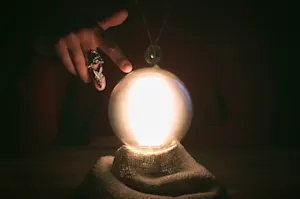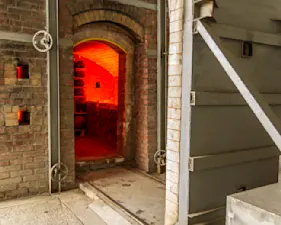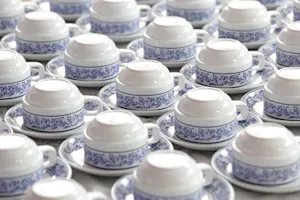What Makes This Word Tick
Millefleur, a word that sounds as magnificent as it looks, comes to us from the French, meaning "a thousand flowers." It's most popularly associated with a style of dense, elaborate floral background often used in tapestry and fabric design. Imagine a charming scene from a classic fairy tale—lush, overgrown gardens filled with a riot of blossoms.
If Millefleur Were a Person…
If millefleur were a person, it would surely be that lively grandmother who surprises you with her vivid garden despite supposedly "retiring" her green thumb years ago. Her clothes are always floral, her stories colorful, and she knows just how to make any room burst with life – just like a millefleur pattern does.
How This Word Has Changed Over Time
The millefleur design has been captivating since the Middle Ages, adorning tapestries that once decorated the grand halls of castles. Although its position in vocabulary has been steadfast, meaning literally "thousands of flowers," the application in the modern world has expanded to various decorative arts, from wallpaper to fashion textiles.
Old Sayings and Proverbs That Use Millefleur
While millefleur itself doesn’t pop up in age-old sayings, its essence rings true to proverbs about beauty and nature, like "A garden without flowers is like life without a smile." Its lush diversity inspires a mindset where abundance and subtlety coexist.
Surprising Facts About Millefleur
Did you know millefleur tapestries were once believed to protect against draughts in chilly stone castles? Their dense weaving was as practical as it was decorative. Also, thanks to their intricate patterns, these tapestries were often used to conceal political messages or family crests among the flowers.
Out and About With This Word
Next time you're visiting an art museum, keep an eye out for millefleur tapestries amongst the exhibits. These masterpieces often tell stories hidden in plain sight within their rich tapestry of flora. In fashion, millefleur prints graced the runway, reviving vintage floral charm with a modern twist.
Pop Culture Moments Where Millefleur Was Used
Millefleur patterns appeared in films like "Beauty and the Beast," where rich tapestry backdrops set the mood for timeless tales. Fashion designers have also embraced millefleur, using it to add opulence to collections that transported wearers to enchanted forests of fabric.
The Word in Literature
In literature, millefleur isn't just a term but a sensory experience. It evokes settings in historical novels where tapestries hang in medieval castles, breathing life into the stone walls. Authors may use it to craft an atmosphere of opulence tinged with the romance of past centuries.
Moments in History with Millefleur
The millefleur tapestry design has made its mark on history primarily through art, with one of the most famous instances being the 15th-century "La Dame à la licorne" series. These tapestries grace the walls of the Musée de Cluny in Paris, striking visitors with their intricate, blossoming beauty.
This Word Around the World
Although millefleur is rooted in French, each culture appreciates the splendor of flowers uniquely—Japan, with its cherry blossoms, or the Dutch tulip fields. Such floral admiration reflects the millefleur's universal allure, transcending language and geography.
Where Does It Come From?
The origins of millefleur lie in the art of medieval Europe, where tapestries adorned with flowers flourished during the late Gothic period. The French translation "a thousand flowers" aptly describes the overwhelming abundance and variety of blooms in this design style.
How People Misuse This Word
Millefleur can sometimes be mistaken for any floral design. However, this word strictly refers to the specific style characterized by its dense and deliberate inclusion of numerous tiny floral elements. It’s about balance and subtlety within apparent chaos.
Words It’s Often Confused With
Millefiori: This Italian term refers to glasswork with colorful patterns reminiscent of flowers, not fabric.
Floral: A general term for anything flower-themed, lacking the complexity specific to millefleur designs.
Additional Synonyms and Antonyms
While synonyms specific to millefleur are few due to its particularity, related terms might include "floral" or "flowery." As for antonyms, "plain" or "unadorned" might serve, highlighting a distinct lack of the word's characteristically lush detail.
Want to Try It Out in a Sentence?
Imagine entering a room where the walls whisper stories from the past, cloaked with millefleur tapestries that make you feel you’ve stepped into a garden painted on fabric.
















